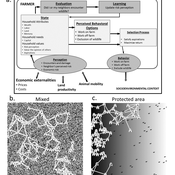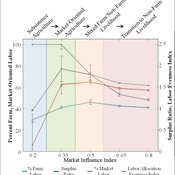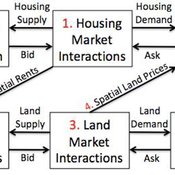
Nicholas Magliocca
AffiliationsUniversity of Maryland, Baltimore County
Personal homepagehttps://sites.google.com/site/nicholasrmagliocca/
Professional homepagehttp://umbc.academia.edu/NicholasMagliocca
ORCID more infoNo associated ORCID account.
GitHub more infoNo associated GitHub account.
No bio entered.
Research Interests
My research focuses on building a systemic understanding of coupled human-natural systems. In particular, I am interested in understanding how patterns of land-use and land-cover change emerge from human alterations of natural processes and the resulting feedbacks. Study systems of interest include those undergoing agricultural to urban conversion, typically known as urban sprawl, and those in which protective measures, such as wildfire suppression or flood/storm impact controls, can lead to long-term instability.
Dynamic agent- and process-based simulation models are my primary tools for studying human and natural systems, respectively. My past work includes the creation of dynamic, process-based simulation models of the wildland fires along the urban-wildland interface (UWI), and artificial dune construction to protect coastal development along a barrier island coastline. My current research involves the testing, refinement, extension of an economic agent-based model of coupled housing and land markets (CHALMS), and a new project developing a generalized agent-based model of land-use change to explore local human-environmental interactions globally.
Wildlife-Human Interactions in Shared Landscapes (WHISL)
Andres Baeza-Castro Neil Carter Nicholas Magliocca | Published Friday, May 22, 2020This model simulates a group of farmers that have encounters with individuals of a wildlife population. Each farmer owns a set of cells that represent their farm. Each farmer must decide what cells inside their farm will be used to produce an agricultural good that is self in an external market at a given price. The farmer must decide to protect the farm from potential encounters with individuals of the wildlife population. This decision in the model is called “fencing”. Each time that a cell is fenced, the chances of a wildlife individual to move to that cell is reduced. Each encounter reduces the productive outcome obtained of the affected cell. Farmers, therefore, can reduce the risk of encounters by exclusion. The decision of excluding wildlife is made considering the perception of risk of encounters. In the model, the perception of risk is subjective, as it depends on past encounters and on the perception of risk from other farmers in the community. The community of farmers passes information about this risk perception through a social network. The user (observer) of the model can control the importance of the social network on the individual perception of risk.
Coastal Coupled Housing and Land Markets (C-CHALMS)
Nicholas Magliocca | Published Thursday, May 18, 2017Next generation of the CHALMS model applied to a coastal setting to investigate the effects of subjective risk perception and salience decision-making on adaptive behavior by residents.
Land-Livelihood Transitions
Nicholas Magliocca Daniel G Brown Erle C Ellis | Published Monday, September 09, 2013 | Last modified Friday, September 13, 2013Implemented as a virtual laboratory, this model explores transitions in land-use and livelihood decisions that emerge from changing local and global conditions.
Coupled Housing and Land Markets (CHALMS)
Nicholas Magliocca Virginia Mcconnell Margaret Walls | Published Friday, November 02, 2012 | Last modified Monday, October 27, 2014CHALMS simulates housing and land market interactions between housing consumers, developers, and farmers in a growing ex-urban area.
Under development.



